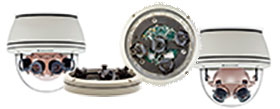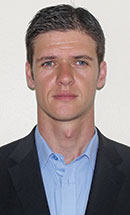

Multi-sensor cameras are growing in popularity as the benefits of what amounts to multiple cameras in the same housing, supported by advanced viewing software, deliver the goods in specific surveillance situations. But what makes these devices different when there are already so many options when it comes to camera selection?

Johan Crause, regional manager for Arecont Vision in Africa, says multi-sensor cameras have unique benefits that differentiate them from high-resolution or Fisheye alternatives. “With Arecont Vision being the first multi-sensor technology in the industry with multiple registered patents, the advantages of these devices are twofold.
“Firstly, the ability to cover multiple segments of the scene with one camera, which means one cable, and one licence, cuts costs significantly,” he explains. “The second is that a traditional PTZ records what it sees. In our case, a multi-sensor camera is recording the whole scene permanently, which eliminates the possibility of an incident occurring in one area when the operator panned and zoomed in another.”
For those companies that have experience using fisheye cameras, the dewarping software is critical in enabling proper control room surveillance. Without it the image is too confusing for an operator to understand what is going on and respond appropriately in good time. With multi-sensor cameras, this is not an issue.
Crause explains that Arecont has no need to dewarp with multi-sensor devices. “These cameras operate a scene as a typical dome camera would, however, the more pressing ability to stitch the scene together is vitally important. With many of our VMS partners we have native integration and are thus able to either stitch or give them the ability to play each sensor in a different salvo, which makes viewing simple and highly configurable.”
Where is the sweet spot?
There may be only on cable and one licence, but multi-sensor devices are more expensive. So where would they be the better choice when designing a surveillance solution? Crause says multi-sensor technology is required in virtually every application these days. “They give the integrator the opportunity to optimally design and implement faster, and based on pixel density, users are able to cover more with less. However, the correct resolution and functionality is highly dependent on what the client actually wants to see.”
If the requirement is to be able to see a face or a number plate, the distance would be a factor and the lighting conditions would play a role. His recommendation for selecting the right solution is based on the following:
1. Find a reputable manufacturer.
2. The ability to have this product integrate into most VMS applications.
3. The ability of the product to have interchangeable lenses and sensors and to be moveable in order to ensure the customer can view the correct scene optimally.
4. The maturity of the product. Normally, generation one products are not as reliable and versatile, so relying on products that matured over a period of time is important.
Stocking up
Highlighting Arecont’s current offerings, Crause says the company has various models that are available to the market at present – mostly in their third generation. A selection includes:
1. The omni-directional four-sensor panoramic camera in both 8 MP, 12 MP, 20 MP and 40 MP derivatives.
2. 180-degree panoramic cameras in both 8 MP, 12 MP and 20 MP, as well as 360-degree panoramic cameras.
3. The latest addition is the Microdome Duo, which is a two-sensor camera that looks after corridors and many other applications, it is available in 4 MP, 6 MP and 10 MP form factors with interchangeable lenses.
4. The third quarter will see a third-generation omni-directional camera that will have a mechanical head and remote focus lenses. The installer will not need to open this head as the software will drive the configuration.
For more information contact Arecont Vision, +27 (0)82 553 9338, jcrause@arecontvision.com, www.arecontvision.com

© Technews Publishing (Pty) Ltd. | All Rights Reserved.